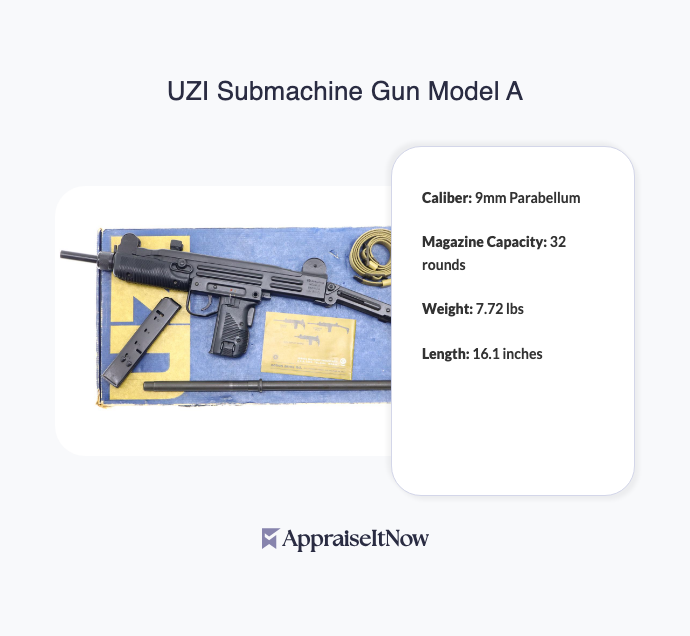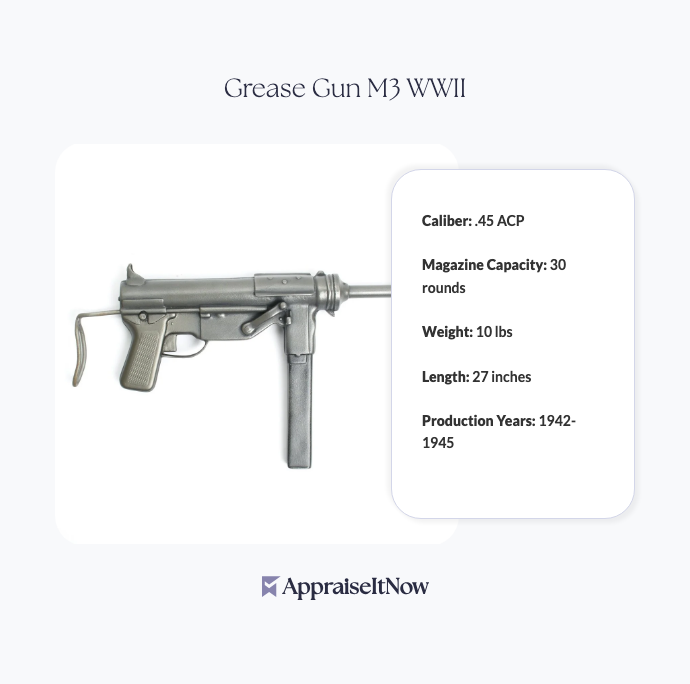<h1>How to Get Your Trapdoor Springfield 1873 Rifle Appraised</h1>
<p>The Trapdoor Springfield 1873 rifle stands as one of America's most historically significant firearms, representing over a century of military excellence and American craftsmanship. If you own this iconic weapon, understanding its value through professional appraisal is essential whether you're preparing for sale, estate planning, insurance coverage, or simply verifying what you have. Current market estimates place well-preserved examples between <strong>$1,500 and $2,500</strong>, though individual values vary significantly based on condition, provenance, and originality.</p>
<h2>Why Professional Appraisal Matters for Your Trapdoor Springfield</h2>
<p>The Trapdoor Springfield 1873 rifle isn't just a firearm—it's a tangible piece of American military history that saw action in the Indian Wars and Spanish-American War. When you're evaluating your rifle's worth, you're dealing with an asset that combines historical significance, mechanical quality, and collector demand. A professional appraisal provides the documentation needed for insurance coverage, legal transactions, and investment tracking.</p>
<p>Professional appraisers bring expertise in authenticating these rifles and understanding the nuanced factors that separate a $1,500 example from a $2,500 specimen. They examine serial numbers, manufacturing variations, and historical context to establish your rifle's precise position within the market. This matters significantly because the difference between a common manufacture and a rare variant can mean thousands in value, and only trained eyes catch these distinctions.</p>
<h2>Understanding Trapdoor Springfield Specifications and Historical Context</h2>
<p>Your Trapdoor Springfield 1873 rifle features the distinctive breech-loading mechanism that gave this rifle its name and reputation. The rifle served as the standard U.S. infantry weapon from 1873 until 1892, when it was replaced by the Krag-Jørgensen. During those nineteen critical years, this rifle was carried by American soldiers across diverse landscapes and conflicts, from the Great Plains to tropical islands.</p>
<p>The rifle chambers the <strong>.45-70 Government cartridge</strong>, a powerful round that remains popular with modern shooters and hunters. This caliber compatibility actually helps maintain collector interest, as shooters seeking historically accurate ammunition options remain engaged with the market. The mechanical reliability and rugged construction that made this rifle legendary continue to influence its desirability among both <a href="/types/antique-gun">antique gun collectors</a> and military history enthusiasts.</p>
<p>Several key specifications define the 1873 design. The 32-inch barrel provides the accuracy and ballistic performance that distinguished this rifle from contemporaries. The single-action mechanism requires manual operation between shots, a characteristic that actually enhances its status as a collector's piece since it represents pre-modern firearm technology without automatic or semi-automatic complexity.</p>
<div class="callout tip"><p><strong>Authentication Insight</strong></p>
<p>Springfield Armory markings on the receiver, combined with proper serial number sequencing, help appraisers verify authenticity and establish manufacturing dates within narrow timeframes.</p></div>
<h2>Key Factors That Affect Your Trapdoor Springfield 1873 Value</h2>
<h3>Condition and Originality Markers</h3>
<p>When appraising your Trapdoor Springfield, condition represents the primary value driver. Original finish integrity—whether you have remnants of the original parkerized surface or full patina from historical use—significantly impacts worth. Appraisers assess metal finish, wood condition, and mechanical function to grade rifles on a scale that directly correlates to market value.</p>
<p>Matching serial numbers across the receiver, lock, and barrel indicate originality and proper assembly, hallmarks that command premium pricing. A rifle with mismatched components suggests either field repairs during service or amateur work, both of which reduce value. The bore condition tells an important story—a bright, clean bore with sharp rifling suggests lighter use or careful preservation, while pitting or erosion indicates hard service or neglect.</p>
<p>Stock condition matters equally. Original walnut wood free from cracks, repairs, or refinishing preserves the rifle's historical integrity. Some collectors and appraisers actually value honest patina and honest repairs more than modern restoration work, as these preserve the rifle's authentic service history. This contrasts sharply with approaches to <a href="/types/antique-furniture">antique furniture</a> where refinishing is sometimes expected.</p>
<h3>Manufacturing Variations and Dates</h3>
<p>The 1873 Trapdoor designation encompasses several variations across different years of manufacture, and these variations carry different values. Earlier production models from the 1873-1878 period sometimes command premiums due to their historical association with the Indian Wars. Later models, manufactured closer to 1892, may show more uniform characteristics but less historical novelty.</p>
<p>The difference between Springfield Trapdoor 1873 and 1884 models represents one critical question collectors and appraisers address. The 1884 variant introduced modifications to the breech mechanism and sight systems that improved performance. However, the original 1873 remains more historically significant as the rifle that won the West, and this distinction affects valuation. Professional appraisers identify these variations through careful examination of receiver markings, sight configurations, and mechanical features.</p>
<h3>Documentation and Provenance</h3>
<p>Historical documentation transforms a rifle from an interesting antique into a significant historical artifact. If your Trapdoor Springfield includes documentation of military service, unit assignment, or historical use, these details substantially enhance value. Veteran association records, shipping manifests, or family history describing where the rifle served can increase appraisal value by 20-30%.</p>
<p>Conversely, lack of documentation doesn't necessarily reduce value, as many genuine rifles lack complete records simply due to age and institutional record-keeping practices. Professional appraisers understand this context and factor it appropriately into their assessment rather than penalizing rifles for absent documentation.</p>
<h2>Market Trends and Collector Demand</h2>
<p>The collectible firearms market, particularly the segment focused on <a href="/blog/understand-the-value-of-your-antique-gun-with-an-appraisal">antique guns</a>, continues showing strong interest in 19th-century military rifles. The Trapdoor Springfield holds particular appeal because it represents accessible pricing compared to rarer variants while still offering authentic military heritage. Unlike some WWII-era weapons where mechanical issues or construction shortcuts affect collectibility, the Springfield's reputation for reliability supports ongoing demand.</p>
<p>Growing interest in American frontier history and military heritage has expanded the collector base for these rifles. Museums, educational institutions, and history enthusiasts actively seek quality examples for display and study. This institutional demand provides floor support for values, ensuring that even common specimens maintain consistent pricing rather than experiencing dramatic market fluctuations.</p>
<p>The question of how many Springfield 1873 rifles were made becomes relevant here—production numbers in the hundreds of thousands suggest availability, yet demand remains strong enough to maintain prices. This scarcity without extreme rarity creates an ideal collector's market where serious enthusiasts can build collections without astronomical per-piece costs.</p>
<div class="callout note"><p><strong>Market Insight</strong></p>
<p>Regional variations in collector density affect prices, with areas featuring active military collecting communities often supporting 15-20% premiums over national averages.</p></div>
<h2>How Condition Grades Impact Appraisal Value</h2>
<p>Professional appraisers use standardized condition grading systems to communicate rifle condition and establish value ranges. An excellent condition rifle with 95% original finish, matching numbers, and minimal wear typically reaches the upper range of $2,500. Very good condition rifles showing 80-94% finish with honest use marks might appraise at $2,000-$2,300. Good condition rifles with moderate wear and possible refinishing fall into the $1,500-$2,000 range.</p>
<p>Fair condition rifles requiring restoration or showing significant wear may appraise below $1,500, entering territory where replacement cost for parts and labor must be factored against historical significance. These lower-value examples still hold collector interest, particularly for shooters who plan active use of the rifle or hobbyists interested in restoration projects.</p>
<p>Understanding your rifle's specific condition allows you to anticipate professional appraisal results and prepare realistic expectations before the evaluation occurs. Taking high-resolution photographs of all markings, bore condition, and mechanical details helps appraisers provide preliminary assessments before in-person inspection.</p>
<h2>Preparing Your Trapdoor Springfield for Professional Appraisal</h2>
<p>Before sending your rifle to an appraiser, document its current condition thoroughly. Photograph all sides of the receiver showing any markings or wear patterns, take detailed images of the bore using proper lighting, and capture the stock condition including any repairs or modifications. Include photos of any accessories, slings, ammunition, or documentation that accompanied the rifle.</p>
<p>Create a written summary of what you know about the rifle's history. Include any family stories, military service connections, acquisition circumstances, or previous appraisals. This context, even if not definitive proof, helps appraisers understand the rifle's potential significance and informs their research into manufacturing variations or historical use patterns.</p>
<p>Package your rifle securely using appropriate firearms shipping methods, ensuring compliance with all federal and state regulations. Many professional appraisers partner with licensed firearms dealers to handle shipping and insurance, eliminating legal complications. The appraisal fee, typically ranging from $150-$400 depending on the appraiser's location and expertise level, provides certified documentation suitable for insurance, sale, or estate purposes.</p>
<h2>Working with Certified Appraisers</h2>
<p>Selecting the right appraiser ensures accurate valuation and professional documentation. Look for appraisers with specific credentials in <a href="/types/ffande">firearms and equipment valuation</a>, certifications from recognized organizations like the American Society of Appraisers (ASA), International Society of Appraisers (ISA), or American Association of Appraisers (AAA). These credentials indicate training in appraisal methodology and adherence to professional standards.</p>
<p>Experience with military collectibles and 19th-century firearms matters significantly. An appraiser with extensive knowledge of Trapdoor Springfield variations, manufacturing dates, and market comparables will provide more nuanced valuations than a generalist. Services like <strong>AppraiseItNow</strong> connect you with USPAP-compliant appraisers specializing in antique firearms, ensuring your rifle receives appropriate expertise.</p>
<p>Ask potential appraisers about their methodology for establishing comparable sales, their experience with your specific rifle model, and what documentation their report includes. Professional appraisals should include photographs, condition description, historical context, comparable sales analysis, and the appraiser's credentials and liability insurance information.</p>
<div class="callout tip"><p><strong>Appraiser Selection</strong></p>
<p>Verify that your appraiser maintains liability insurance and membership in professional organizations—these credentials indicate commitment to professional standards and legal compliance.</p></div>
<h2>Insurance and Documentation Uses</h2>
<p>A certified appraisal of your Trapdoor Springfield 1873 provides essential documentation for homeowners or firearms insurance coverage. Many insurance policies require professional appraisals for items exceeding certain value thresholds, and firearms often trigger these requirements. Your appraisal establishes agreed value for insurance purposes, ensuring replacement cost coverage reflects actual market value rather than arbitrary estimates.</p>
<p>Beyond insurance, professional appraisals serve critical functions for estate planning, trust documentation, or charitable donation valuation. If your rifle will pass to heirs, a documented appraisal prevents disputes about value and provides clear guidance for distribution or sale decisions. For those interested in <a href="/types/memorabilia-and-collectibles">memorabilia and collectibles</a> appraisals more broadly, the same principles apply—professional documentation creates clarity and reduces future conflicts.</p>
<h2>Final Considerations for Your Trapdoor Springfield 1873</h2>
<p>Your Trapdoor Springfield 1873 rifle represents more than monetary value—it connects you to American military history spanning frontier conflicts, imperial expansion, and the transition to modern warfare. Professional appraisal services respect this historical significance while providing the practical documentation needed for modern asset management. Whether you're selling, insuring, or simply curious about what you own, understanding your rifle's market position through certified appraisal provides confidence and clarity.</p>
<p>The $1,500-$2,500 price range reflects strong collector demand for these historically significant rifles. Quality examples continue appreciating moderately as supply remains finite and institutional interest in American military heritage grows. Professional appraisers ensure your specific rifle is positioned accurately within this range, accounting for condition, originality, and any unique historical features that distinguish exceptional examples from common specimens.</p>
<div class="callout note"><p><strong>Key Takeaway</strong></p>
<p>A certified appraisal of your Trapdoor Springfield 1873 rifle provides essential documentation for insurance, sale, or estate purposes while establishing your rifle's position within today's market. Professional appraisers trained in 19th-century military firearms and USPAP-compliant documentation standards ensure accurate, defensible valuations that serve your needs for years to come.</p></div>







.avif)







